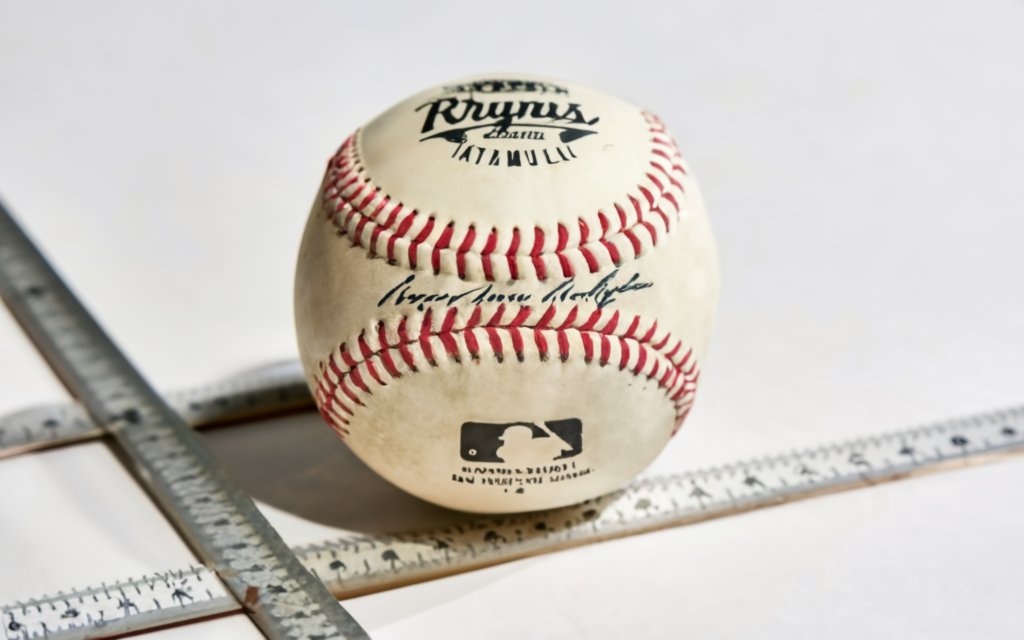Table of Contents
Baseball is one of the most popular sports in the world, and whether you’re a player, a fan, or simply curious, you may wonder, How much does a baseball weigh? Understanding this fundamental aspect of the game can enhance your knowledge of how baseball works and how equipment is regulated. In this article, we will dive into the weight of a baseball, its history, and the various factors that may impact it.
What Is the Official Weight of a Baseball?

To begin with, how much does a baseball weigh? According to official rules, a standard baseball weighs between 5 and 5.25 ounces (142 to 149 grams). This weight is regulated by Major League Baseball (MLB) to ensure consistency across all games and tournaments. The baseball must also have a circumference of 9 to 9.25 inches.
How much does a baseball weigh? The official weight ensures fair play, and the equipment is standardized across leagues. This weight has been consistent for decades, ensuring players develop skills using trustworthy equipment.
The History Behind the Baseball’s Weight
The history of baseball dates back to the 1800s. But how much did a baseball weigh in earlier times? The original baseballs were made from hand-stitched leather and yarn, and their weight often varied significantly. Some were lighter, while others were heavier than today’s regulated balls.
The modern standard of 5 to 5.25 ounces became the rule in the early 20th century, ensuring uniformity. Before that, teams often used different types of baseball, which affected the outcome of games.
Why Does the Weight of a Baseball Matter?
Knowing how much a baseball weighs is essential because it impacts gameplay. If a baseball were too light, it would travel too fast, making it difficult for batters to hit. On the other hand, if it were too heavy, it would slow down the game and make pitching and fielding harder. How much does a baseball weigh?
The ideal balance of weight makes a game possible where pitchers can hurl fastballs with accuracy, hitters can make firm contact, and fielders can precisely track the ball. The weight is essential to the sport’s ability to continue its exhilarating pace and intensity.
How the Baseball’s Weight Impacts Pitching
Pitchers rely on the weight of the baseball to control their throws. With the regulated weight, they can throw a variety of pitches, such as curveballs, sliders, and fastballs, with the correct velocity and spin. A weight change would disrupt their ability to throw accurately.
How the Weight Impacts Hitting
For batters, the ball’s weight affects how far they can hit it. If a baseball weighed more or less, it would change how it swung. How much does a baseball weigh? A lighter ball could fly farther but might not be as accurate, while a heavier ball could make it harder to get it out of the infield.
What Materials Are Used to Make a Baseball?
The materials used in making a baseball are vital to maintaining its weight. The core of a baseball is made from cork and rubber, which gives the ball its bounce. Around this core, layers of wool and yarn are tightly wound, helping to maintain the ball’s shape and weight. Finally, the ball is covered with leather, which is tightly stitched together.
These materials are carefully selected to ensure that each baseball weighs within the 5 to 5.25-ounce range. The construction process is meticulous because even slight variations can affect the ball’s performance.
Are There Different Weights for Different Types of Baseballs?

While standard baseball in professional leagues weighs 5 to 5.25 ounces, other variations exist. For example, youth leagues may use slightly lighter baseballs, especially for young players. These balls typically weigh between 4 and 5 ounces. The lighter weight helps younger players develop skills without straining their arms or risking injury.
Softballs, used in a sport similar to baseball, are much larger and heavier, typically weighing between 6.25 and 7 ounces. The game’s dynamics change with the weight and size of the ball, making softball distinct from baseball.
Fun Facts About Baseball Weight
Here are some interesting facts about the weight of a baseball:
- A baseball’s weight is surprisingly consistent across major leagues worldwide, including in Japan’s Nippon Professional Baseball (NPB) league, where the weight is virtually identical to MLB.
- Baseballs used in MLB games can only be used briefly before they are replaced, often after just a few pitches. This ensures the ball stays at its proper weight and shape during the game.
- The weight of a baseball has inspired comparisons in other areas of sports. A basketball, for example, weighs substantially more (22 ounces) than a tennis ball, which weighs much less (around 2 ounces).
How Does Weather Impact a Baseball’s Weight?
Weather can affect how much a baseball weighs. A baseball may pick up a bit of moisture from the air when it’s humid, making it somewhat heavier. However, this difference is usually very small and doesn’t significantly impact play.
The ball may feel lighter in dry conditions, mainly due to the grip rather than actual weight changes. In either case, baseballs are carefully inspected before each game to ensure they are within the regulation weight range. Click here for more information about Featured.
Now that we’ve explored how much baseball weighs, the weight plays an essential role in how the game is played. With a weight of 5 to 5.25 ounces, baseballs are designed to provide balance, fairness, and excitement on the field. From its history to the materials used, the weight of a baseball is a fundamental part of the game.

